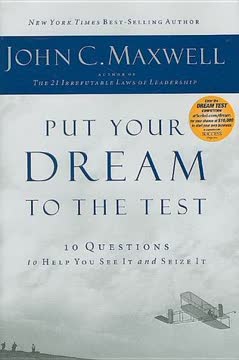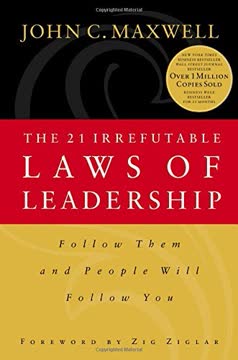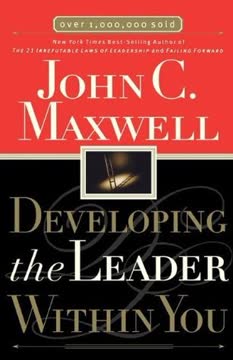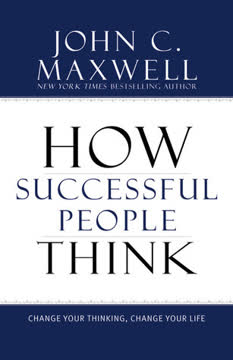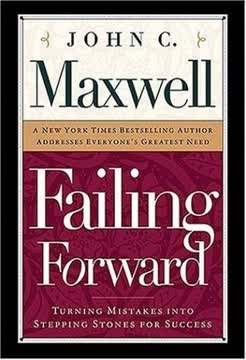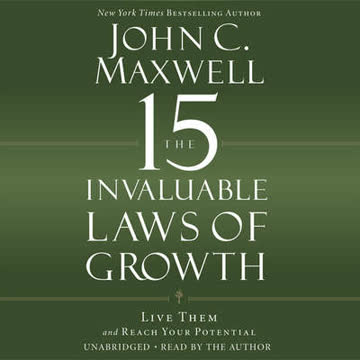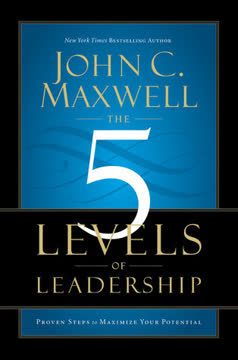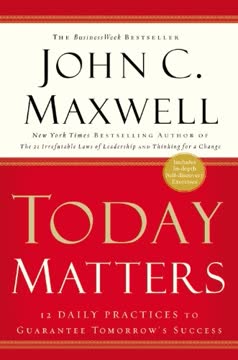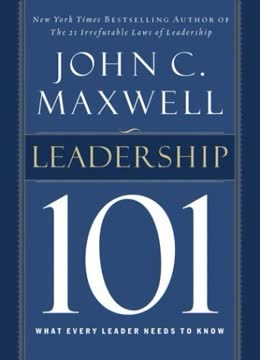Key Takeaways
1. Own Your Dream: Ensure it's truly yours, not someone else's.
You cannot achieve a dream that you do not own.
Personal ownership is foundational. Many people pursue dreams that are not truly their own, often influenced by parents, friends, or societal expectations. This leads to a lack of genuine fit, draining energy, and ultimately, unfulfillment. Arnold Schwarzenegger, for instance, defied his parents' wishes for him to be a policeman or carpenter, instead pursuing bodybuilding with an unshakeable conviction that it was his true calling.
Recognize false dreams. Dreams that aren't authentically yours often feel like a burden, draining your energy and keeping you in your comfort zone. In contrast, a true dream provides wings to your spirit, fires you up, and compels you to stretch beyond mediocrity. It aligns with who you truly are and are meant to be, rather than who others wish you were.
Bet on yourself. Taking ownership means believing in yourself, even when others doubt you. It requires leading your life actively, rather than passively accepting it, and saying "yes" to your potential. When you love what you do and do what you love, you tap into a productive and creative power that makes your dream feel like a natural extension of your purpose, not a forced obligation.
2. Clarify Your Vision: See your dream with specific, compelling detail.
If you have a clear vision, you will eventually attract the right strategy. If you don’t have a clear vision, no strategy will save you.
Clarity precedes strategy. A vague notion of a dream is insufficient; it must be defined with crystal clarity before it can be pursued. Mike Hyatt, facing a struggling publishing division, first retreated to articulate a highly specific, compelling vision for its future, including measurable goals like "ten franchise authors" and "four books a year on the New York Times bestsellers list," before developing any strategy.
Effort creates clarity. A clear dream doesn't just appear; it requires deliberate effort. This involves asking probing questions about your emotions, intuition, observations, and intellect to understand your current state and desired future. Utilizing resources like books, experiences, and conversations with mentors can help sharpen this picture, transforming a general idea into a concrete, actionable goal.
Purpose and priorities emerge. When your dream is clear, it naturally aligns with your purpose, reinforcing your sense of direction. This clarity then dictates your priorities, helping you identify what sacrifices are necessary and what actions you must dedicate yourself to. Without a clear vision, daily choices become haphazard, potentially leading you away from your true aspirations.
3. Build on Reality: Rely on your strengths and controllable factors.
People who are successful in the long run don’t leave everything to chance. They focus on what they can do, and then they do it.
Dreams meet reality. While dreams are born of imagination, they must eventually connect with reality to be achievable. Relying on luck or external factors is a "Fantasyland" approach, as seen in "American Idol" auditions where talentless individuals believe sheer desire is enough. Andy Hull, the musician, built his dream on his natural musical talent, relentless practice, and a shrewd business plan, not just hope.
Leverage your strengths. Success comes from building on your inherent talents, not struggling in areas of weakness. This activates the "Law of Least Effort," making tasks feel easier and more enjoyable. Focusing on strengths also enables consistently good results, as excellence is a habit cultivated where natural ability thrives.
Align habits with potential. Your daily habits are the building blocks of your dream. If your habits don't align with your aspirations, you must either change them or change your dream. Successful individuals, like John Wooden, meticulously plan their actions and cultivate positive habits that compound over time, ensuring their efforts are focused on what they can control and what will yield the highest return.
4. Fuel with Passion: Let your dream compel and energize you.
I have never seen anyone anywhere at any time achieve anything of any value without the spark of passionate desire!
Passion is the engine. Passion is the critical starting point for all achievement, providing the energy and focus needed to navigate the inevitable detours, problems, and disappointments on the path to a dream. It's the force that pulls you up through adversity, pushing you out of your comfort zone to take initiative.
Passion positions for success. When you pursue what you are passionate about, you naturally position yourself for success. It's not just about getting what you want, but enjoying the process. Bob Taylor, founder of Taylor Guitars, exemplifies this; despite financial struggles, his consuming passion for building guitars kept him going, ultimately leading to global success and fulfillment.
Sustaining the fire. Passion isn't a one-time spark; it requires continuous stoking. This involves:
- Understanding your natural temperament (e.g., persistent melancholic vs. quickly excited sanguine).
- Keeping your core values and the "why" of your dream in constant view.
- Overcoming the fear of being different and resisting the apathy that can accompany aging.
By actively nurturing your passion, you ensure the long-term fuel needed for your dream journey.
5. Strategize Your Path: Develop a clear, flexible plan to reach your dream.
The secret of getting ahead is getting started. The secret of getting started is breaking your complex, overwhelming tasks into small, manageable tasks, and then starting on the first one.
Dreams need a blueprint. A dream without a strategy is merely wishful thinking. Nicholas Negroponte's "One Laptop Per Child" initiative, despite its noble vision, initially struggled until it developed a clear strategy for design, manufacturing, and distribution, even enlisting external expertise for implementation.
The SECURE approach to planning:
- State all your positions: Define your present position, your future dream, and the intermediate steps.
- Examine all your actions: Take daily, consistent action towards your dream, avoiding procrastination.
- Consider all your options: Remain flexible and willing to alter your plan based on results and unfolding circumstances, like Sam Walton of Wal-Mart.
- Utilize all your resources: Identify and engage every available asset, team member, and opportunity.
- Remove all your nonessentials: Be willing to give up good things that don't directly contribute to your dream.
- Embrace all your challenges: Anticipate and prepare for obstacles, failures, and the need for critical and creative thinking.
Consistency compounds. The real difference between a dream and wishful thinking is consistent daily action. Doing something, however small, every day that relates to your dream is crucial. This focused persistence, like the "rule of five" used by the "Chicken Soup for the Soul" authors, creates momentum and eventually leads to significant results.
6. Assemble Your Dream Team: Include others who inspire, challenge, and complement you.
A dream is a compelling vision you see in your heart that’s too big to accomplish without the help of others.
No dream is achieved alone. Whether you're an artist, entrepreneur, or politician, realizing your dream requires the support and collaboration of others. A dream team multiplies your value, enables you to focus on your strengths, and provides companionship and diverse perspectives.
Qualities of a dream team:
- Inspiration: People who encourage, cheer you on, and lift you to a higher level, helping you overcome detours and maintain hope.
- Honesty: Individuals willing to provide constructive feedback, even when it's difficult to hear, helping you identify and address shortcomings.
- Complementary skills: Team members whose abilities, experience, and temperament fill your gaps, allowing the collective to achieve more than any individual could.
Transferring the vision. To recruit a team, you must effectively transfer your dream logically, emotionally, and visually. This involves:
- Logically: Presenting a realistic understanding of the current situation and a sound, manageable strategy.
- Emotionally: Showing the dream from their perspective, sharing your heart and hope, and highlighting the benefits for them.
- Visually: Living out your dream with integrity, becoming a compelling advertisement for what's possible.
When successful, the team takes ownership, and the dream becomes bigger and better than you alone could have imagined.
7. Commit to the Cost: Be willing to pay the price, knowing it's higher than expected.
All dreams have a price tag on them, and the cost is almost always higher than a person expects to pay.
Dreams are not free. While the dream itself is free to imagine, the journey to achieve it demands a price. This cost often appears sooner and is higher than anticipated, requiring sacrifices that test your commitment. Kevin Myers, a pastor, learned this when he sacrificed his beloved motorcycle, a symbol of personal freedom, to fund his church's growth, realizing the difference between mere desires and true dreams.
The price is continuous. You don't pay once and then enjoy the ride; the price must be paid repeatedly. Every step forward, every new level of achievement, demands further sacrifice. This "give up to go up" principle means constantly letting go of things, even good things, that no longer serve your ascent towards the dream.
Essential costs to pay:
- Dealing with criticism: Learning to discern valuable feedback from noise, especially from those who matter, and having the courage to stay the course despite doubt.
- Overcoming fears: Confronting irrational fears that act as self-imposed prisons, choosing to live fearlessly and take necessary risks.
- Hard work: Committing to consistent, diligent effort, doing "one percent better in 100 ways" and taking "the extra step" beyond what's comfortable or expected.
While some prices (like compromising values or family) are too high, embracing these common costs is non-negotiable for dream achievement.
8. Cultivate Tenacity: Persist daily, overcoming obstacles and negative thinking.
Persistence and determination alone are omnipotent. The slogan ‘press on’ has solved and always will solve the problems of the human race.
Tenacity defines finishers. The path to any dream is fraught with difficulties, obstacles, and setbacks. Tenacity is the unwavering will to take "one more step," even when you feel you can't, distinguishing mere "starters" from "finishers." Elizabeth Keckly, born into slavery, demonstrated incredible tenacity by working tirelessly to buy her freedom and then building a successful career as a dressmaker, eventually serving Mary Todd Lincoln.
Quitting is an internal choice. External circumstances rarely stop people; it's internal surrender that leads to giving up. Tenacious individuals, like Christopher Columbus whose log entries consistently read "This day we sailed on," feed their "greater self" with resolve, believing in their ability to overcome, even when the journey is long and arduous.
Strategies for tenacious progress:
- Improve your vocabulary: Eliminate "can't" and embrace "can do" statements, recognizing the immense power of words to shape your reality.
- Act despite imperfect conditions: Don't wait for everything to be "right"; move forward anyway, understanding that conditions will never be perfect.
- Change your thinking: Focus on what you've accomplished and your capabilities, viewing failures as learning opportunities rather than insurmountable pitfalls.
- Practice the Rule of Five: Commit to doing five specific, small actions every day that move you closer to your dream, building consistent momentum.
- Never give up: Believe that even when all possibilities seem exhausted, there are always other ways, options, and opportunities to explore.
9. Find Fulfillment in the Journey: Seek satisfaction in the process, not just the destination.
The greatest value of your dream won’t be what you get from it; it will be who you become by pursuing it.
Fulfillment in the gap. The journey between the birth and realization of a dream is often long and challenging, a "dip" that weeds out the uncommitted. True fulfillment comes from finding satisfaction in this process, not just fixating on the destination. If the journey itself isn't rewarding, the dream becomes a "frustration gap," making sustained effort difficult.
Embrace realistic expectations. While an ideal vision is inspiring, it's crucial to understand that the perfect, ideal picture of your dream is rarely achievable. Realistic dreams appreciate the time and imperfections of the journey, preventing constant disappointment. The bigger the dream, the greater the "gap" and the longer the journey, requiring patience and resolve.
Cultivate joy in the process. Fulfilled people:
- Keep dreaming: Continuously explore possibilities and maintain a sense of wonder, even amidst hard work.
- Appreciate each step: Celebrate small victories and milestones, finding joy in daily progress rather than solely in the final prize, as exemplified by Coach John Wooden's love for practice.
- Make new discoveries: Remain open to learning about themselves and the world, recognizing that personal growth is a profound reward of the pursuit.
- Embrace life's balance: Understand that life is a mix of good and bad, and choose to act rightly regardless of feelings or circumstances, leading to self-satisfaction.
The pursuit of a dream is transformative; it's about who you become, not just what you conquer.
10. Pursue Significance: Ensure your dream benefits others beyond yourself.
If a man for whatever reason has the opportunity to lead an extraordinary life, he has no right to keep it to himself.
Beyond self-interest. The ultimate test of a dream's worth is its benefit to others. Great individuals throughout history, like William Wilberforce who dedicated his life to abolishing slavery, are remembered not for personal gain but for their selfless contributions. This shift from "success" to "significance" often occurs in phases, moving from personal ambition to a desire to serve.
Stages of significant dreaming:
- Significant for myself: Building a personal foundation (career, education, resources) to have something to offer. You cannot give what you do not have.
- Significant for others: Expanding your dream to include helping others, starting small, like Mother Teresa's focus on one unhappy home or one dying person.
- Significant with others: Collaborating with a team to achieve a shared dream, recognizing that true impact requires collective effort and shared ownership.
This journey transforms lives, turning individuals into catalysts for change.
Lasting impact. A dream that benefits others creates a legacy that lives on beyond the dreamer. Wilberforce's fight against slavery not only freed millions but also sparked a global movement for social reform. When your dream is shared and contributes to the greater good, it enriches the world and, paradoxically, brings profound personal fulfillment.
Last updated:
Review Summary
Put Your Dream to the Test receives high praise for its practical approach to pursuing dreams. Readers appreciate Maxwell's ten-question framework for evaluating and achieving goals. The book offers inspiration, strategies, and real-life examples to help clarify visions and overcome obstacles. Many found it motivating and useful for both personal and professional aspirations. Some critics noted repetitive content, but overall, reviewers recommend it for anyone seeking to turn dreams into reality. The audiobook version also garnered positive feedback.
Similar Books


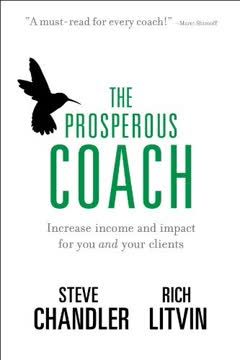
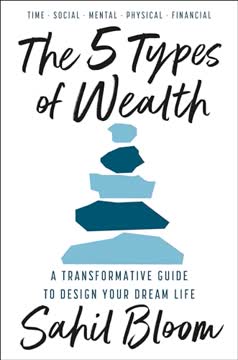

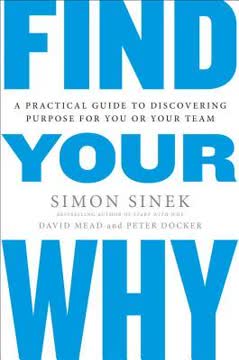


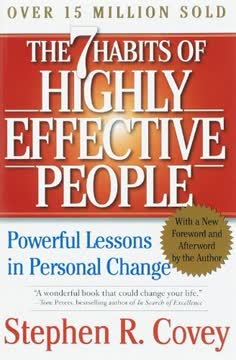

Download PDF
Download EPUB
.epub digital book format is ideal for reading ebooks on phones, tablets, and e-readers.
